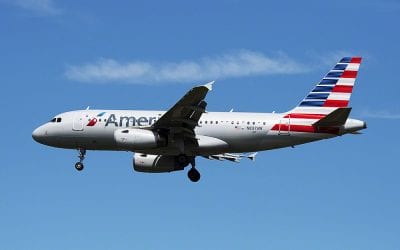An important choice cruisers must make is what size ship best fits their personality and needs: mega, large or small. Last week, I was with a couple trying to make that choice for their second cruise. They were trying to decide between a second megaship cruise or going with a small ship. As they explained it to me, they were torn between the great entertainment and activity options of megaships and the quiet and privacy of small ships.
Small ships, I told them, may be quiet and intimate, but they aren’t more private than megaships. I explained that in my experience, if you want to keep a low profile, it’s not easy on a small ship, where most everyone runs into each other each day and shipboard friendships are often quickly made. On a mega or large ship, I added, you can fade into the crowd.
If you’re looking for a new cruise experience by trying a mega, large or small ship for the first time, I have some pointers for you to consider before making your reservation.
Mega and large cruise ships have the most choices for shipboard entertainment and activities. By their sheer size, they have enough space for multiple entertainment venues, including: Broadway and Las Vegas-style shows, dance clubs, large flashy casinos, water shows, and nightclubs. Generally, small ships will have one theater with a few small acts, at most, plus some have a more intimate club with music and possibly a small casino.
Very small ships, with fewer than 300 passengers, may have a performer or two, but more often enrichment seminars and workshops are all the entertainment they offer. On my cruises to the Arctic, Antarctic, and Galapagos, on ships of fewer than 150 passengers, the only performer was a pianist. The theater was used for daily lectures on history, culture, wildlife, geology, marine biology, etc. They were great, but if anyone was looking for a chorus line, they were sorely disappointed. The library had ample books and DVDs, and we enjoyed some hilarious cooking demonstrations.
Mega and large ships have sizeable public spaces to host many activities. Some have climbing walls, amazing water slides, ice skating, surfing, bowling, a full service gym with classes, saunas, multiple swimming options and lots of on-board shopping. Small ships generally have a pool, a small gym, plus a store or two. Very small ships normally have some exercise equipment, and a couple of great hot tubs, plus a store for essentials and a few souvenirs.
For families, especially ones with small children, large ships have a variety of facilities, activities and entertainment suitable for youngsters, while small ships, especially very small ships, are rarely well equipped to handle children.
On megaships the dining choices are almost endless, from fine dining to fast food. On large ships the dining options are less numerous, but they still offer a variety of venues, especially for dinner. The downside of mega and large ship dining is that often reservations for the more popular restaurants are difficult to get for the time desired and where reservations aren’t taken, lines can be long.
A few small ships have a small alternative dining room or two, but most of the time meals are taken in the main dining room, where reservations aren’t generally required and there’s rarely a wait. Small ships concentrate on high quality service at all meals. Though small ship menus are varied, in my experience, if you can’t find a menu choice you like, many will offer to make an alternative meal you prefer.
Mega and large ships need large port facilities to dock. In some locations they need to anchor well off-shore and use tenders to take passengers into port. It can take significant time to ferry all passengers ashore and later return to the ship. Small ships need smaller facilities in ports. When they must anchor off-shore, they can typically get their passengers ashore quickly. There are many interesting ports small ships can visit which megaships and large ships bypass.
While mega and big ships offer a variety of shore excursions when in port, their cruises focus more on the ship and what it has to offer. These ships’ shore excursions are most often large bus excursions with multiple buses simultaneously visiting the same sites. Small ships focus on shore excursions, sometimes with special options, and often spend more time in port than mega and large ships.
On most ships, staterooms are a mixed bag. On mega and large ships, all manner of cabins with different views, sizes and options are available. Some staterooms have special services, including a butler. On small ships they generally concentrate on high quality service and amenities for all staterooms. On some small ships every stateroom is a suite.
If the shipboard experience is the most important aspect of your cruises, then mega and large ships are likely best suited to fulfill your needs. They have the most variety of shipboard entertainment, activities and dining.
If cruise destinations and shore excursions are the most important feature for your cruise, then small ships will generally offer you the type of cruise experience you seek. They often visit ports not on mega and large cruise ship itineraries and stay in port longer to give passengers a highly satisfying port experience. They frequently have shore excursions unavailable on mega and large ships.
(Regent Seven Seas Cruises Voyager, docked at Tallinn, Estonia. Copyright © 2014 NSL Photography. All Rights Reserved.)
After many years working in corporate America as a chemical engineer, executive and eventually CFO of a multinational manufacturer, Ned founded a tech consulting company and later restarted NSL Photography, his photography business. Before entering the corporate world, Ned worked as a Public Health Engineer for the Philadelphia Department of Public Health. As a well known corporate, travel and wildlife photographer, Ned travels the world writing about travel and photography, as well as running photography workshops, seminars and photowalks. Visit Ned’s Photography Blog and Galleries.



